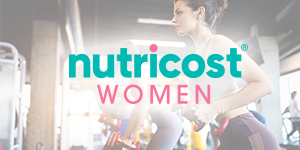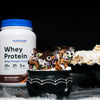3 Female Friendly Nutrients (You’re Not Getting Enough Of)

Some vehicles run on gasoline. Others run on diesel. The differences between the bodies of men and women aren’t nearly so drastic, but it’s certainly true that they don’t use the exact same fuel.
On average, a man’s body requires more calories than a woman’s, but women require more vitamins and minerals. This means that a man and a woman could eat the exact same meal, and it’s possible that the man could meet his nutritional needs comfortably while the woman falls well short.
In this article, you’ll learn about 3 (plus one bonus!) nutrients which are uniquely important for women’s health and that you’re probably not getting enough of!
Iron
Perhaps no other nutrient has a male/female divide quite as stark as iron. Whereas the daily requirement for most men is between 8-9mg, women need almost twice that much!

Why is this?
The biggest factor is menstruation. During menstruation, women lose massive amounts of iron which must be replaced. Women also tend to lose more iron during exercise than men.
Research suggests that 20% of women under 50 are iron deficient, and for active women that number rises to more than 33%! Some researchers even speculate that as many as 80% of female athletes are not getting enough iron to keep up with the amount of physical activity they perform.
Signs of Deficiency
Because iron plays such a crucial role in transporting oxygen throughout the body, low iron can cause noticeable symptoms such as:
- Fatigue
- Shortness of Breath
- Dizziness
Folic Acid
Folic acid is a form of folate (vitamin B9) which is essential for its role in early neurodevelopment. Mothers with sub-optimal folic acid intakes are at a much, much higher risk of giving birth to a child with a Neural Tube Defect (NTD).

NTDs are defects of the brain, spine, or spinal cord and happen in the first month of pregnancy, often before a woman even knows she’s pregnant. To reduce risk, all women of childbearing age are recommended by the CDC to get at least 400 mcg of folic acid a day, and that number rises to 600 mcg for pregnant women.
Folic acid is so effective that after the United States began using it to fortify cereal-grain products NTDs were reduced by 28%!
Unfortunately, low folic acid doesn’t come with any super-noticeable side effects, so many mothers often don’t even realize they’re low until it's too late.
Calcium
Got milk?
Okay, but seriously. Your body doesn’t produce calcium on its own, meaning you’ve got to get everything you need from your diet. Your body uses calcium to circulate blood, move muscles, and release hormones.
Calcium’s more well-known benefits have to do with healthy teeth and bones, but I probably don’t have to tell you that!

Women need the same amount of calcium as men, but their generally lower calorie intake can make meeting those needs more difficult. Women are also at a greater risk of developing osteoporosis than men, particularly after menopause.
Often calcium deficiency isn’t detected until the bones are already brittle and weak. That being said, it’s never too late to start increasing your calcium intake! Better safe than sorry!
Bonus: Vitamin D
Vitamin D and calcium go hand in hand. Your body needs vitamin D to absorb calcium. Without it, you could drink as much milk as you wanted, and it wouldn’t do you any good!
Some studies suggest that as many as 42% of Americans are vitamin D deficient. We just don’t get out in the sun enough!
The problem is even worse for women. In pregnant women, low vitamin D has been linked to pre-eclampsia, gestational diabetes, and adverse pregnancy outcomes.
Can Supplements Help?
When it comes to nutrition, women are at a bit of a disadvantage. In the modern world, processing has greatly reduced the nutrient density of many foods, meaning that we’re often getting far less nutrition out of far more calories than our great-grandparents did.

For men, this problem isn’t so bad. Men need more calories anyway. Women, however, have lower calorie requirements but higher nutrient requirements. It’s a double whammy. Studies suggest that as many as 37% of women are at risk of at least one vitamin deficiency or anemia.
Supplements can help close the gap. Studies show that women who use a multivitamin are 26% less likely to suffer from nutrient deficiency than women who do not supplement.
Wrapping Up
Women have unique nutritional requirements from men. Their physiology and reproductive cycle create different needs. Make sure yours are getting met!
The nutrients talked about in this article are often difficult for women to get enough of. If you can meet your health requirements through changing your diet, that’s great! But if you can’t (like many women) then consider supplementing to fill in the gaps.
In the end, your health is all that matters. Maximize it!
Sources
https://www.ncbi.nlm.nih.gov/pmc/articles/PMC5537775/
https://www.ncbi.nlm.nih.gov/pmc/articles/PMC8023996/
https://www.womenshealth.gov/healthy-eating/healthy-eating-and-women
https://www.cantonmercy.org/healthchat/42-percent-of-americans-are-vitamin-d-deficient/
-
Posted in
Bone Health, General Health, Vitamins











